|
I've left my original version of this document, written in January 2021, in the blog post below, as this updated version is a fair bit longer with fairly significant changes. (I had some issues with the browser/blog interface, so I've put all the relevant photos into a gallery at the end of this article.) My Life in Drumming, part 1- updated on 16-8-21, by James Gilberd [Minor updates 6/1/22] I’ve not achieved any degree of fame as a drummer, neither have I ever played with anyone properly famous (although some have gone on in music and have done very well). There are numerous far better drummers around Wellington, Aotearoa New Zealand, where I have always lived; drummers with serious talent who have at some point made the courageous life decision to climb into the ring and dedicate themselves to drumming. This is a step I long ago decided to not take (which involved some backtracking on the small steps I had taken) for the reasons written herein. Having said that, quite a few people seem to think I play OK, I’ve been complimented by some good musicians on the musicality of my playing, and I’ve never had any trouble finding others to play with and form bands with. In short, I’ve had a really nice time playing drums and, at age 58, I’m still playing on and enjoying myself more than ever with it. Like (I imagine) a good surf, a blat on a motorbike or a fast horse, or downhill skiing; a decent session on the drum set, whether alone or playing with other musicians, leaves you feeling really good all over. And it’s far less dangerous than most of the other pursuits I mentioned, just a little hard on the ears and sometimes the neighbours. Early There's a colour slide photograph of me as a toddler, taken in about 1965 by my dad. It shows me sitting on the lawn in the sunshine with a yellow and blue tin drum. I appear to be having a pretty good time bashing on it. (If I can find this photo I'll add it to the gallery. It's pretty cute ; - ) At Khandallah primary school in the late ‘60s to early ‘70s there was a school band, of sorts. It comprised a few older girls playing recorders and three older boys playing drums; a bass drum, a tenor, and a snare drum. Occasionally at lunchtime they appeared on the balcony of the school hall that overlooked the lower playground and they played this one simple march. Easily impressed, we all gathered around below to watch and listen. The sound of the drums naturally overwhelmed the recorders, and we would chant The boys are bet-ter. The boys are bet-ter. All of this must have been discouraging for the girls. The drums were kept locked away in the hall somewhere. I longed to play them, or even just see them close up. When the hall and half the rest of the school burned down in a massive fire in December 1972, it spelled the end of the band. I remember watching the towering flames from our dining room window as the blaze destroyed my Standard 2 (now called year 4) classroom, the hall and the drums with it. My favourite of the school drum trio was the shining chrome snare drum. Its metallic crack cut through everything and carried the main rhythmic riff of the march. To emulate its sound, I found that a handful of three-inch jolt-head nails laid on the bottom of a biscuit tin worked well enough. I taught myself to play the basic march rhythm on this, using some sticks from the firewood. My brother, who was ten years older and at college, sometimes used to play along with me on a cardboard box or a breadboard. This was encouraging. Soon I was given a pair of real drumsticks as a present. They were Premier brand, made of lancewood. The sticks were treasured items and kept for years (at least until I began drum lessons and was told to get full-size drumsticks to strengthen my hands). My mother used to take me into town when there were processions of marching bands – a common event in Wellington during my childhood. The wide streets would be closed to traffic and numerous bands would parade through. Some were brass bands, some Highland pipe bands. Despite Scottish ancestry on my mother’s side, I didn't have a preference; neither the shining horns nor the skirl of the pipes won me over. It was all about the drums, and all of it was thrilling. The bands were about the loudest thing I'd ever heard back then, with the bass drums being felt in my small chest as they passed. Next, in the mid 70s, came a real drum. It was an Aria snare drum on a stand, and it had a pressed-sheet brass cymbal mounted on a side bracket. I remember coming into the sitting room on the morning of my 11th birthday to see it standing there, shining chrome contrasting with its dark red finish. I thought it was fantastic. Drum Lessons My drum teacher, Norman Gadd, lived just up the road in Johnsonville, played percussion in the New Zealand Symphony Orchestra, and had a cool music studio in a large separate room built behind his house. In it was a marimba, a vibraphone, a dark green six-piece drum set (all Premier brand, made in England), a piano, and the end wall was festooned with various percussion instruments. I guess most kids in the area who learned to play drums were his pupils at some stage, either at his house or at nearby Onslow College where he taught after school. (There's a photo of Normal Gadd at the end of this post.) In that studio I learned to read drum music and play the rudiments on a Remo practice pad. Behind Mr Gadd was his drum set, which I looked longingly at lesson after lesson but never got to play on. As things progressed, a ride cymbal (a Zildjian mini-cup) was added and I'd play along while he played marimba or vibes. He was great at these keyboard percussion instruments and obviously enjoyed playing them. (This was my first exposure to jazz, I just realised.) Strangely, I never once heard him play his drum set. I guess that was just his modest way, not wanting to show off to his students. During this period I had a couple of brushes with Classical music; one gig with the NZ Youth Orchestra, as a piece they were recording required a snare drum. I wasn’t very good. William Southgate, the conductor at the time, took me aside to run through the drum part but I never quite got it. It was the environment that put me off, the tittering girls who all played proper instruments. This clearly wasn’t my scene. In 1978-79, Mr Gadd entered our Onslow College percussion ensemble in the regional Schools Chamber Music competition a couple of years running. I felt better about this, bolstered by several other percussionists, like a gang of sorts. I was also entered into a snare drum competition two or three times, where we all had to play the same written piece. I was fair to middling at it and was never going to win. My heart wasn’t in it so it didn’t bother me. So, the other day, while searching for something else in my cluttered man-cave/drum & band practice room, I came across a folder of notes from when I first had drum lessons when I was around 11 years old, so from about 1974-5. I hadn’t seen it for decades and hoped I hadn't long-ago thrown it out. I’d already started writing this post so the notes didn’t spark it, but finding them when I did was just nice timing. In the folder of notes are the programmes for the Chamber Music competitions and the pieces we had to play for the brass band snare drumming, but the latter were thermal-paper photocopies so have faded beyond readability, which is a shame because I’d like to try playing them now. You know how it is when you’re a kid – you never really try, you don’t fully commit, you do just enough to make a half-closed fist of it. But mostly you’re not motivated enough to really focus your energy and concentration onto something. Most kids, including me, simply had no idea how to. Guess that’s where pushy parents and hot-housing come in, but I’m pleased to have experienced neither of these childhood-wrecking horrors. My parents were encouraging and supportive but never pushy. To do things better, I needed to get a bit older. And a bit bigger; I was physically a small kid, and pretty compact as an adult, but at least my adult body was equal to the demands I placed on it. And it still is at 58. I have pretty good coordination and maintain a basic level of strength and fitness without fanatically working at it. I hope this all lasts a while longer as there is much still to do. (I recently met veteran Auckland drummer Bruce King, who is an inspiration and a fine fellow. Twenty years my senior, he’s in good shape and is still a working musician.) I continued private drum lessons with Mr Gadd for longer than I probably needed to (till 1977), but I didn’t know how to stop as the Tuesday-evening lessons were part of my life. He was good-natured without being a smiley-type of person, and he always stuck me as being fundamentally a happy man. I guess this was mainly because he spent his life doing something he loved doing. Aside from drumming, this was the main thing I learned from him: do what you want to do in life and you will have a good chance at happiness. I have done that, and luckily it has panned out, so-far. This may sound a bit complacent and simplistic but I believe it is basically true. It’s way better than slogging it out in a job you detest with the hope of one-day doing what you really want to. That day may never come. Teens My first band was with Onslow College friends, the only three I knew in my year who played rock band instruments. We (David Churcher, Laurence Tyler, Richard Watts and me) called ourselves The Vultures (which incidentally was the name of Joe Strummer's first band). We all had quite different musical tastes: Dylan, Stones, Clash, Zeppelin, respectively (in a nutshell), which later caused inevitable problems but initially we were all delighted to be in a band and playing together. We practiced for several years (mostly at my house), played one gig at a sixth form party, and split up. In my head, it was similar to the last performance in the movie The Commitments; we played surprisingly well but argued intensely between sets. It didn't quite come to blows like in the movie, but there was no more Vultures after that night. I remember the sense of loss I felt the following day while removing my hand-painted design* from the front of the bass drum. (Stashed with Mr Gadd’s notes was copy of the invitation to that party. It was pretentiously worded, which was one of the many things we argued over.) The Vultures used to practice at our house, and I remember our first band practice as a trio in my bedroom, probably in early 1977 (before Richard joined and introduced us all to punk and new wave), when we could just play Wipeout, Get Back and Jumping Jack Flash – seeing my brother Peter look in through the door and smile, recalling those times of a decade earlier. *'The Vultures' was red-painted lettering with extended, pointy serifs. Perched menacingly on the cross of the T was a ragged, silhouetted vulture with a red eye. After the Vultures, in early 1980, Richard and I formed a punk band with Jenny Whyte (from Wellington East Girls’ College), and Nigel Elder (a year ahead of us at Onslow – we didn’t know him then) joined not long after. We played at venues downtown, such as The Last Resort on Courtenay Place, from a young age. (At the start, Richard and Jenny were 16, I turned 17, Nigel was 18 and had left school.) When Jenny left we became the Neoteric Tribesmen, and the period of these two bands lasted from 1980 to about ’84, a time when the Wellington live music scene was pretty exciting and somewhat dangerous. Condemned Sector: http://www.upthepunks.co.nz/wiki/index.php?title=Condemned_Sector, Neoteric Tribesmen (with Nigel & Richard): http://www.upthepunks.co.nz/wiki/index.php?title=Neoteric_Tribesmen Note: these links no longer work as the Up the Punks site has since disappeared. Plugging http://www.upthepunks.co.nz/ into The Wayback Machine https://archive.org/web/ will work, as will searching the band names, which will bring up a range of pages and articles across a number of sites. I understand the UTP site will be restored sometime, so I'll update the links then. Here's a short doco I made about the 2002 Up The Punks! exhibition at Thistle Hall. The main thing I learned during this period was a major ethic arising from the punk movement, which could be put as: If you have something to say, just say it. If you want to do something, just get on with it. Don't think you're not good enough yet and don't let older people and those in authority intimidate you. You don't need their permission. This was at the front of my mind when starting up Photospace Gallery in 1998. http://www.photospacegallery.com/ Jazz It might seem a bit of a leap from post-punk to jazz. Actually, it was, despite something of a buffer period with the Resurrectionists, a band that evolved out of the Tribesmen, adding Mike Musgrove on lead vocals and later included a brass section (as everyone was doing in the mid-80s) of Steve Roche and Peter O’Brien. Tragically, in 2009 Peter went missing permanently in Boise, Idaho. https://charleyproject.org/case/peter-denis-obrien First band practice was just listening to jazz records, a style of music I'd never heard much of before. It was a memorable afternoon, with vinyl records spread out on lounge floor of a sunny, elevated Kelburn house, and meeting the new double bass player, Paul Henderson. Soon we had gigs, then a residency at the upstairs bar of Clare's nightclub in Garrett St, just off Cuba St. (Nos. 2 & 4 Garrett St, like many Wellington buildings, have been converted into apartments.) Drum solos: never done ’em. Except this once, at Clare’s. I’d had a shitty day and was a bit wound up over a girl I fancied at Uni and so I let it all flow out in a drum solo. During it, our bass player Paul escaped to the bar. He told me later that Bruno Lawrence was also at the bar and said to him that he really enjoyed my solo. I didn’t meet or even see Bruno, and had I known he was there I never would’ve played the solo as I would’ve been too self-conscious. (In the 1960s and 70s Bruno was one of NZ’s leading jazz and rock drummers.) This was as near as I got to anyone famous, except one night when we were playing at the same venue, the band Kiss were there for a drink (out of their makeup). I didn’t meet them either. https://en.wikipedia.org/wiki/Bruno_Lawrence Oh yeah, there was the night back in August 1981 when The Cure held an impromptu jam in our (Neoteric Tribesmen) band practice room in the basement of Clyde Quay School, Mt Victoria. I was at the preceding party at Dave MacLennan’s Oriental Bay flat. Sometime after midnight the three members of The Cure showed up in their stage gear and I was quietly in awe, too shy to say anything – but wasn’t a participant in the legendary jam. The school was entirely rebuilt and the basement no longer exists, which is a shame. The photo of Michael Hall and other Onslow punks was taken in there (see photos at the end of this post). Article in Stuff, Aug 5, 2017 https://www.stuff.co.nz/entertainment/music/95297507/flashback-fascination-st--the-cure-jam-and-party-with-wellingtons-postpunks Also http://www.upthepunks.co.nz/wiki/index.php?title=The_Cure (See note above re. The Wayback Machine https://archive.org/web/ By the time the jazz band became a trio (with Barbara Griffin and Paul Henderson) and we were playing several nights a week, word got out that I was considering ‘going pro’ as a drummer. I don't recall declaring this, but Wellington's most respected drummer, the late Roger Sellers, turned up at our gig to watch us and he invited me to meet for coffee the next day. His advice was basically ‘don't give up your day job’. He was right on the button, of course, but I’d been effectively operating as a professional musician for around a year and a half, playing several nights a week and teaching drums as well (the money was flowing freely everywhere up until the 1987 financial crash), before I had a career change to photography. From then on, drumming has thankfully remained an amateur pursuit for me. (Although I was in a covers band from the late 80s to the late 90s, playing 10-15 paid gigs a year, which was nice extra income and mostly good fun.) https://www.rnz.co.nz/concert/programmes/upbeat/audio/2018653813/remembering-roger-sellers Teaching Between about 1981 and 1990 I had maybe a dozen drum students. I showed them essentially what Mr Gadd taught me, with a few modifications, and also applied the rudiments of drumming (snare drum figures and patterns with odd names such as ruff, flam, paradiddle, etc) to the drum set. I have never personally had any lessons on the drum set as such, only snare drum and cymbal. These days I wouldn’t dream of taking on students, as my drumming style has fallen so out of touch with what most drummers are doing, both stylistically and technology-wise (I don’t use any tech at all). Also, as a professional photographer who runs courses and workshops, it annoys me when amateur photographers impinge on this territory and cut into my much-needed income stream, so I wouldn’t attempt to do the same to the professional drummers who teach in my neighbourhood. Update 6/1/22, 4pm: I'm half an hour from my first drum lesson in a long time! Alternatives In the late 80s through early 90s I played in a band that never rose above local semi-obscurity because of existing during a difficult period for live music, and the band's original repertoire was eclectic, diverse and impossible to pigeonhole. We made two cassette albums that together sold dozens of copies. This band evolved into the covers band (above). This was the nearest I got to touring, with plenty of out-of-town gigs and some mini-tours up the North Island. I never slept well on those jaunts and always seemed to end up room-sharing with the band snorer, but I had fun, adventures, and learned a lot about playing by working with better musicians than myself and in a wide variety of styles, as required at weddings, corporate events and such. I learned more about professionalism; not necessarily having to be the best band around but certainly one of the most consistent and reliable (there were ‘better’ bands that were quite short-lived). And also that accountants are not necessarily as staid and boring as reputed: while playing at one large company's Christmas do, I looked to my left to see a couple having sex on a chair, behind a Christmas tree just a few metres from the drum kit. We delivered what the clients wanted and only fully rocked out when the audience was down to a bunch of drunk people who were really enjoying themselves at end of the night. (The accountants shone at this, too.) I also learned about musical versatility* – playing everything from waltzes to hard rock – and stamina, as we often played for three to four hours, excluding breaks. You have to maintain a certain level of fitness to play drums, as they’re a more physical instrument than most; and, never having been in a band major enough to have roadies, there’d be half a dozen trips to and from the car at each end of a gig for the drums plus a few more for the rest of the band gear. There were times I wish I’d learned sax or trumpet instead. *Versatility: I've played a lot of genres, even old-timey dance hall swing, but some musical genres I just cannot play convincingly (reggae, any type of metal, genuine blues), or won't play out of sheer animosity (folk, basically). Musical styles can be imitated, but if you have no interest in or feeling for a style of music, then no matter how professional the performance, it’s blatantly obvious to the rest of the band and your audience. And, as the drummer, the feel of the music, which is picked up consciously or unconsciously, springs directly from you, from the timing and intensity of every note you play, so you really need to have your heart in what you play. In early 1999 my photography business began taking over my Saturdays and spare time, so I quit the covers band (which spelled the end of it). There followed a period of about four years of not being in a band. Some business coaching helped me get things under control and claw some personal time back, and around 2004, serendipitously, I ran into Laurence Tyler from the Vultures days. It happened he was looking for a drummer for his country band. Country!? My exposure to country music had mainly been of the hokey variety, those painful NZ Saturday night TV shows in the 70s. But I’d seen The Warratahs a couple of times and thought they weren’t so bad, so I decided to have a crack. Also worth mentioning; I felt quite flattered to be invited to join a band once again, particularly one in which the musicians were no slouches. I was once fired from a band, because it (the rhythm section) wasn’t working out. In my defense, which I didn’t bother to argue over or even mention, it was the bass player who had the sloppy time. I admit to not being a metronomic player, as I tend to play with my feelings maybe a bit too much (not a good excuse), and if my time had been more solid it might’ve worked out better. But what would’ve had me leaping out the window if I hadn’t been pushed out was the way the singer counted in jazz numbers: one, two, one-two-three-four. (You have to imagine the finger clicks on the emphasised beats. For non-musicians reading this; the rhythmic basis of jazz music (and most country music) is the backbeat, which is what makes it swing. In classical music, marching and suchlike – music originating in Western Europe – the emphasis is on the count of one – 1, 2, 3, 4, or in a waltz, 1, 2, 3, 1, 2, 3. Jazz moved the emphasis onto the weak beats of two and four – the backbeat: 1, 2, 3, 4 … Eureka, it swings! Rock generally has an equal emphasis on all four main beats, which is what propels it along.) Anyway, no regrets there; I was well out, and they went back to being a duo. The country band audition went well, and Grasslands opened up another world of music I knew little about. Like jazz (but sharing little common ground except the backbeat), it proved rewarding and enriching. After maybe seven years of playing with Grasslands, and with the big five-oh visible on the horizon, I began to wonder how many more years of drumming I had left in me. I felt like making the most of what remained by returning to original music that was more complex rhythmically and would allow me to really hit the drums the way I wanted. So I turned down an offer from another country band, and in 2013 Bernard Blackburn and Grant Guillosson (both from Grasslands), Stu Brown (from Short) and I formed Kosmo-0 (pronounced kosmo-nought). Our first gig was as support for a reunion Condemned Sector/Neoteric Tribesmen gig, with Richard Watts visiting over Christmas 2013-New Year from Oxford, UK, and original 1980 band member Jenny Whyte coming in to once again nail the bass. It was all good and I’m glad we did it. One Grasslands song, an original - County Fair https://photospacenz.weebly.com/kosmo-0-music.html https://www.scoop.co.nz/stories/CU1312/S00334/wellington-punk-band-to-reunite-for-one-gig-after-30-years.htm?from-mobile=bottom-link-01 There was jazz and there was punk, and then there was jazz-punk! Between Grasslands and Kosmo-0 came the Hipper Critters (2010-2013). https://photospacenz.weebly.com/hipper-critters.html Bruce Mahalski was more of a poet than a traditional singer, John Costa played a mean Warr guitar (a kind of Chapman Stick – bass and guitar together on one extra-wide fretboard, played by tapping), both were comedians, and with Katie Morton’s keys and Michael Hall’s sax we had a truly unique band that could play at an acoustic level in a gallery (I’d play with brushes) or at a rock band level in a regular venue. Michael was a year behind me at Onslow College and appears on the right in the photo below, with Caroline Forsythe (bleached hair), Hans McCaskill (centre, wearing blue jacket), and Lars ___ (in blue, at back, and I don’t know who the other three are), taken in our Clyde Quay School basement practice room (the AV logo on the door was for the Ambitious Vegetables, who originally had the room before splitting into the Mockers and The Red): http://www.upthepunks.co.nz/wiki/index.php?title=File:Sec2c_08.jpg Sorry, the link doesn’t work but I found the photo. It can be found using Wayback/Up The Punks URL/Condemned Sector. [The photo is in the gallery at the end of this post.] What did I learn from playing in the Hipper Critters? I have no idea yet. I’m still processing the experience. Maybe how to play drums while wearing a sheep-head mask. Somewhere in there was a period of free jazz, which came out of a bunch of avant garde musical events that ran at Photospace Gallery in the early-mid 2000s and which inevitably I got drawn into. I was invited to fill in for an absent drummer. It was a Monday night at Happy (in the basement of the former Cricketer’s – the Brutalist-style concrete building on the corner of Tory & Vivian Sts, Wellington) with an audience of a couple-dozen-plus, mostly musicians. It was shit-scary going onstage not knowing in the slightest was what I'd be playing. Up to then, all the music I'd played was highly structured, even the jazz, meaning I knew in advance how many bars of this beat and how many of that, how to transition between them and when to start and stop. But this spontaneous musical style was another new experience, another one which I quickly developed a taste for. The core of it was artists Rick Jensen (who had exhibited at Photospace Gallery), Sam Stephens, Dick Whyte, Robyn Keneally and Dave Black, and my involvement was mainly with Sam in the Rick Jensen Trio and later with Sam and Dick in the Vicious Circles. I learned about and about being in the moment, keeping my ears fully open and playing what I felt in response to what others played while simultaneously leading the music, all of us shaping the spontaneous piece in real time. The audience was mainly like-minded musicians and, to be honest, for anyone else the music would likely seem a lot more fun to play than to listen to. Which it was. https://therickjensentrio.bandcamp.com/track/high-tension So now I’m in a band with Nigel Elder again, called Condenser (the name coming from my phone auto-correcting Condemned Sector during a text – and this is the first time I’ve ever provided the name for a band I’ve been in). We’re both in our late 50s and our bassist Taylar Mallo recently turned 23. (Recruiting him, then aged 21, on Facebook chat: “I hope you realise we’re quite old.” “That’s OK, I might learn something.”) We’re playing some of our own old punk songs, but mostly covers from the late 70s-early 80s, playing all of them faster than we used to but with somewhat less anger (at least from me and Nigel). There seems to be a kind of circularity to all this. https://www.facebook.com/Condenser-NZ-107811970638943/ The other thing that seems kind of circular, and is the actual point of this post, is the changing way I’ve engaged with drumming over my lifetime so far. I have to go back to what’s written on the front page of the thermal photocopies of Norman Gadd’s teaching notes: PRACTISE.
The ten commandments of music practice; they clearly come out of wisdom and are good guidelines for any serious musician. However I didn’t take them fully on board at the time and I disregard almost all of them now, except no.10 which I frequently indulge in the exact opposite of. It helps me relax, and it probably helped a bit with the free jazz. Another thing I have seldom done is learn to play drums by playing along to recordings. At some point early on I heard or read or was told to not play along to records because it teaches you to follow and drummers are supposed to lead. Opinion is divided on the subject, with me taking Captain Rum's position*. Looking back now, maybe it was not such good advice, but I took it because it made sense to me at the time and it came from someone I respected. Maybe this has been detrimental to my playing – I don’t know – but it certainly shaped it. Perhaps I chose that path because it suited my personality. I’ve never been an imitator or a follower of trends. If everyone else is doing a thing I’ve often done the opposite, but not to the extent of becoming a complete eccentric (some may disagree) or a contrarian. While this early decision has led to me missing out on some things (many excellent drummers have learned initially by playing along to recordings, Taylor Hawkins of the Foo Fighters being but one example), it has significantly influenced how I interact musically. I will probably never be capable of playing a drum cover good enough to post on YouTube. *To quote Captain Rum from Blackadder series II - The Potato, "Opinion is divided on the subject. All the other captains say it is [common practice to have a crew on a ship], I say it isn't." https://www.youtube.com/watch?v=bIXQFaEsvlQ Recently Since Covid-19, several things have changed. With Condenser, I have played along with some songs on records (mostly vinyl ones, still in my collection and purchased using all of my available money when they first come out) to learn them, and sometimes I copy the drum track note for note as if playing a drum cover. It’s taken me this long to realise that a lot of drum parts are very well thought out, not just by the original drummer but also perhaps by the record producer or the songwriter. The Stranglers’ Nice and Sleazy is an example, so I play it as close as I can to the original recording. (The drums are quite exposed and anything else I could come up with would do the song a disservice.) Other songs, like The Jam’s In the City, I strive to play exactly as Rick Buckler did, but I’m not yet able to do so. But the significant change lately has been that I’ve become interested in drums and drumming once again. Years ago, when I began to listen to Radiohead and other complex, progressive music, I paid little individual attention to what the drummer played and far more attention to the whole sound of the band and the structure and effect of each song and the whole album. This was all fine, as I learned a lot about appreciating the whole of a piece of music, but what went along with it, for me personally, was something of a loss of interest in and enthusiasm for paying the drums, something of a disconnection from the instrument. For years I just wasn’t stretching myself, I was playing comfortably within my level of ability, just adapting to different musical styles, which isn’t that difficult if you have a fairly sound basis of technique. For years I never strove to get any better at playing the drum set. Recently this has changed. I'm thinking probably there is a matter of ego and pride here. With Radiohead, Mogwai and some other bands I like, I'm not that intimidated by the drumming. I don't mean it's not really good – it's great – but I flatter myself that I could fit into those or similar musical situations and at least make a fist of it. With, say, Tool – well forget it. There was a comment on a Facebook thread that said If you’re not into Tool you’re not a drummer. This caught my attention, naturally, so I listened to some Tool. I did this online, and – more satisfactorily – on CD (found at the local op shop). Dana Carey is brilliant both technically and creatively, as are the other musicians, but I found that Tool didn’t personally engage me. I believe it’s fine and healthy to respect really good bands without having to actually like them.) I think the main reason for my return of enthusiasm for drums and drumming is the influence of my friend Dave Sanderson. Like me, Dave learned drumming young (but from his dad, an accomplished drummer) but he left playing drums for a long period and has recently got back into it with commitment and (I don’t like using this word but it seems the best fit) passion. Also, we are both engaged with trying to make up lost ground (Dave more than me, as I’ve played in bands almost continuously, just not really practiced or tried to improve as a drummer). Even from distant Auckland, Dave also managed to infect me with a mild case of GAS (Gear Acquisition Syndrome). Unlike Covid-19 this has been a positive thing, if a little hard on the wallet. It began with a few vintage Avedis Zildjian and Paiste cymbal purchases via TradeMe and has grown to acquiring a vintage Premier drum set (which should arrive soon from down south). Somewhere in there was the almost-accidental TradeMe purchase of a carbon-fibre shell snare drum, unique and custom-built by Dave’s friend Dave Morello - a proper drummer and a larger-than-life presence in the drum scene. It's a privilege to own and play this unique instrument, though I haven't got into snare drum collecting* to the almost fetish-level of the Daves. (We three have a private chat group called Drum Nerds in Auckland, which is loads of fun but doesn't help at all with the GAS.) *But gaining; seven snare drums to date (6/1/22), after 25 years of owning just one drum kit with its one snare drum and the cymbals I had on it. Update, May 2021: The Premier kit arrived as promised. It was beautiful, better than I expected, and in remarkably good condition for being over fifty years old. It rolled out of the factory in England at about the time I first heard the band on the school hall balcony at primary school. So I was immediately after a few parts to get the Premier kit back to its original configuration, and Dave S. suggested I contact Bruce King in Auckland. Bruce was super helpful and dug out for me the exact bits I wanted. I posted some photos of the restored set on a Premier vintage drum enthusiasts’ group on Facebook and they agreed it was a fine-looking instrument. Further update, late July 2021: I had a rush of blood to the head and acquired a 1976 Ludwig drum set from a collector in Auckland. It’s massive (well, it’s American, so of course), comprising eleven drums (it’ll be twelve once a snare drum is added), like driving modest English and Japanese cars all your life (currently, a Corolla hatch) and suddenly getting the urge to buy a massive vintage Chevrolet or a Buick or something else totally impractical, so big it won’t fit on the driveway, never mind the garage (well, it won’t fit in the downstairs room and still allow space for band practices). It seemed to me to be significantly under-priced so I did the Buy Now. No regrets. Well, some… Childhood, again As a kid, I wanted to know everything about drums and drumming. This meant poring over brochures and other material acquired free from music shops, reading them again and again, later subscribing to Modern Drummer magazine from America, and finding out everything I could (long before the internet, of course). I was very keen on cymbals and the mystique of their production, individual uniqueness and wide variety of sound palette, especially Zildjian and Paiste, which were the only major cymbal brands back in the 1970s (to the point where everything else available in NZ back then was a bit rubbish by comparison; this is not at all the case today). I still consider myself more of a cymbalist than a drummer, and maintain something of a fetish for older Avedis Zildjian and vintage Paiste Formula 602 cymbals. I haven't got into the contemporary makers' ranges for a good reason; the price of them. They look and sound fantastic but I see a huge money pit looming there. Non-drummers can seldom appreciate the qualities of good cymbals. They’re hand-crafted by artisans (well, with help from some machinery) with family-secret metallurgical recipes handed down for many generations. They're a bit like fine Scotch whiskies; I have the palette for those too but, alas, not the size of wallet. In the 70s and 80s I attended some drum clinics. The first was c.1975 by Roy Burns, who represented Rogers drums. This was held in a venue at which I would later attend my first punk gig – the Rock Theatre, a.k.a. Billy the Club. (Now demolished, it was behind Trades Hall in Vivian St.) My mum arrived to pick me up at the end of the clinic and came in while Burns was playing his final solo. She was so impressed by the experience that it led to me getting my first drum set, an old Premier kit bought from my drum teacher (see photo below). Mr Gadd kept the two floor tom-toms from this set to use with his later (early 70s) model set, which had a similar but bluer finish. Note the Editor’s comment at the end of this article on Roy Burns: https://www.notsomoderndrummer.com/not-so-modern-drummer/2018/5/7/famed-drummer-roy-burns-passes I’d not heard of Roy Burns before he visited Wellington, but I’d read about Carmine Appice in Modern Drummer so when he gave a clinic in Capital Music Ltd, a small music shop in Courtenay Place (in 1977 when he toured NZ with Rod Stewart), I was there in spades. My third drum clinic experience was provided by the brilliant Simon Phillips in the 1980s. (Symmetry, balance, poise.). Will Calhoun (Living Colour) gave the last drum clinic I attended. He was funny and seemed a great guy but I don’t recall much of his drumming. Also, there was Indian tabla player Trilok Gurtu, who was memorable. His teacher used to hit him and his fellow pupils with a stick if they played figures wrongly. It was the mid-late 1980s when I gradually realised I didn’t have what it takes to be a full time professional drummer, even if I’d had the ambition to be one, which I didn’t. The break came when I contracted campylobacter food poisoning and was so ill I wasn’t able to play drums for a month. Fortunately during that period photography kinda dropped out of the sky and into my lap. I’d never really taken a photo before 1986, but a pathway opened up and photography soon became my full time profession. Thing is, while I’m passionate about photography (so I’ve been told, often), I sometimes feel that I could stop taking photos tomorrow and not be too bothered about it (except for being out of a job, of course). But music is a different story. As long as my hearing holds up, I want to stick with music. A tutor on my photography degree course, Paul Davidson, was fond of saying, ‘Your eyes feed into your intellect but your ears are connected directly to your soul.’ Back to the present During the initial Covid-19 lockdown, March-April 2020 in New Zealand, I began watching YouTube videos on drumming. Yeah, way late to the party. I found that many things had changed. For starters, the rudiments I spent years learning; well, everyone plays them differently now to the way I was taught them. I won’t get technical here but what I learned in the 1970s was more the classical percussionist’s style. Also, the way I gripped the drumsticks (also learned then) was holding me back and also needed attention. In short, my playing technique needed a reboot. I dusted off the practice pad, found an old photographic tripod to set it up on, and began the work. I’m still at it. (It’s helping with playing the Condenser set, which is still mainly too demanding for my current technical ability, so there’s some urgency.) Nearly there Here's the message I sent Dave Sanderson just before Christmas 2020, which started me off on this piece of writing (drafted in January, revisited and finished in August) and which sums my current situation up well enough: “In many respects I feel like a complete beginner at drumming – a feeling that I enjoy. It's because – maybe – I used to care a lot about all that stuff, subscribed to Modern Drummer mag in the 70s and early 80s, and when I was a kid I lapped up anything I could get my hands on – free brochures etc. Then I lost interest in drums, as such, and was solely interested in the music. In the meantime, there have been many developments. People seem to play quite differently now and I feel kinda old school, a bit of a relic. But in a good way. I'm also enjoying doing something as a total amateur, with no expectations from clients and all that stuff that photography had become for me.” Dang! Not sure now why I need the other 7,000 words. That’s me: an amateur (in the true sense of someone who does a thing for the love of it, not necessarily in an inferior way) still stuck aesthetically and technically somewhere back in the 1970s thru early ‘80s. I'm trying to get out it it, but part of me says it’s not such a bad era to be stuck in, musically at least. Things could be worse... Recently on YouTube, I saw a video of one-armed drummer Jack Thomas. https://www.youtube.com/watch?v=0tTgU7CYfgk Closer to home and back in March 2019 I attended a gig in Wellington by Wazzo Ghoti (pronounced Fish). In 1987 their original drummer Bill Morris was the victim of a serious assault which left him crippled. He had been physically incapable of playing drums or doing much else since the attack, but he made his first drumming appearance at this gig and played at least half the Wazzo set, mostly using the right side of his body, his left side being almost useless, still. Watching his performance was moving and unforgettable. These are but just two examples that remind us of all that we have to be thankful for, that we are here today and are able to do what we do. In my case, I really have no excuses. So far, my life has been a very easy ride. Nothing much bad has happened to me, the worst two days of my life being those when my parents died (Mum in 1999, aged 78, Dad in 2004, aged 87). Of course I don’t know what lies ahead but I have been exceptionally lucky so far, and while not financially very wealthy (at least by the standards of my peers in NZ), I have maintained my health and have always enjoyed the means to do pretty much what I choose to, at least at a modest level. I don’t have any children, which has meant I could always selfishly do what I want without having my time and money sucked away by dependents. I feel very fortunate to be in a solid married relationship, productively self-employed, and be able to continue to pursue my interests in the arts and spend time with my wife, friends and family. And my cat. One thing I don’t ever want to become is a bitter old man. I won’t claim to have done all things as well as I potentially could have, because I’ve never fully taken the leap of faith and made the sacrifices required to do so. For instance, while it would’ve been really cool to have been in a properly successful band, I have never been prepared to make necessary sacrifices and do what it takes to be in one so I’m not ever going to regret that it didn’t happen. (Though I do think such an experience would’ve made me focus on my drumming and I would have proven good enough. I’m telling myself that, anyway.) I’ve had over than forty years of enjoyment out of playing drums and I don’t regret a single minute of it. It has been a gift given by the people named above and some others whom I can’t name, and I am eternally grateful to all of you for it. Thank you. Oh, and apologies to all my neighbours past and present for the decades of noise from my drumming, band practices and loud stereo playing, all of which will hopefully continue unabated. - James Gilberd, January & August 2021.
0 Comments
Leave a Reply. |
Archives
August 2021
Categories |
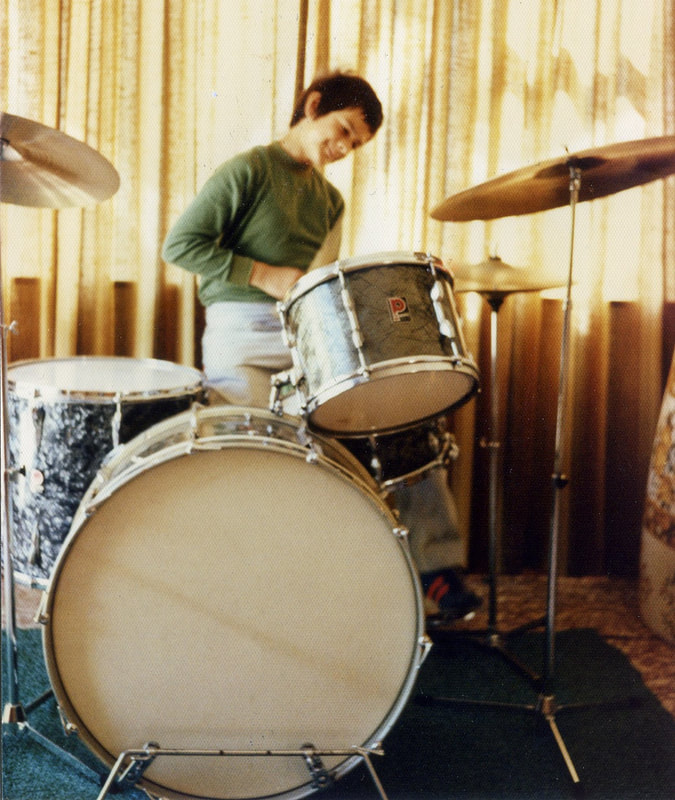
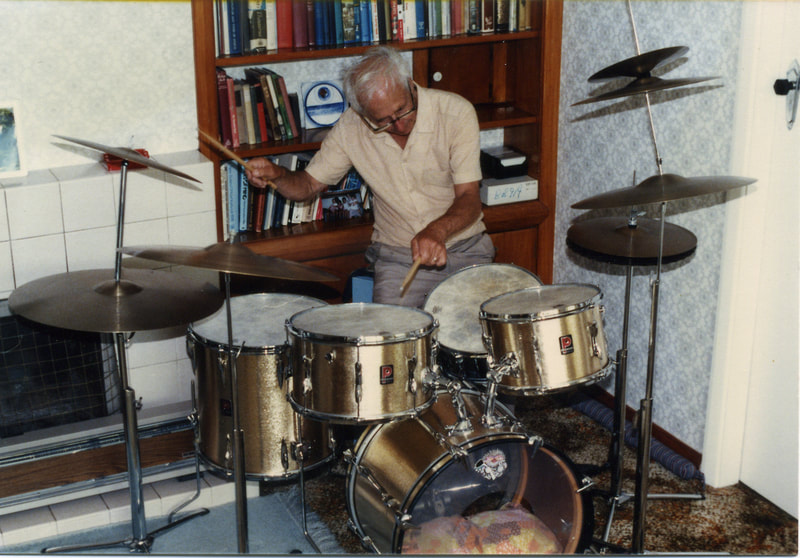
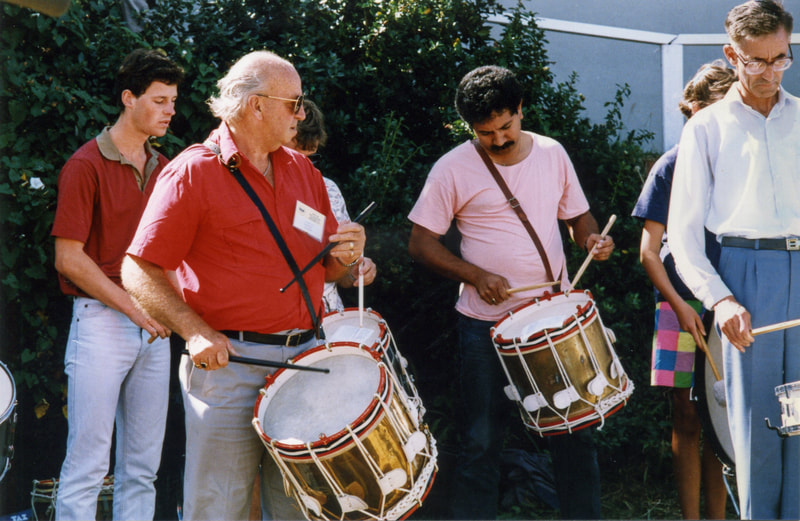
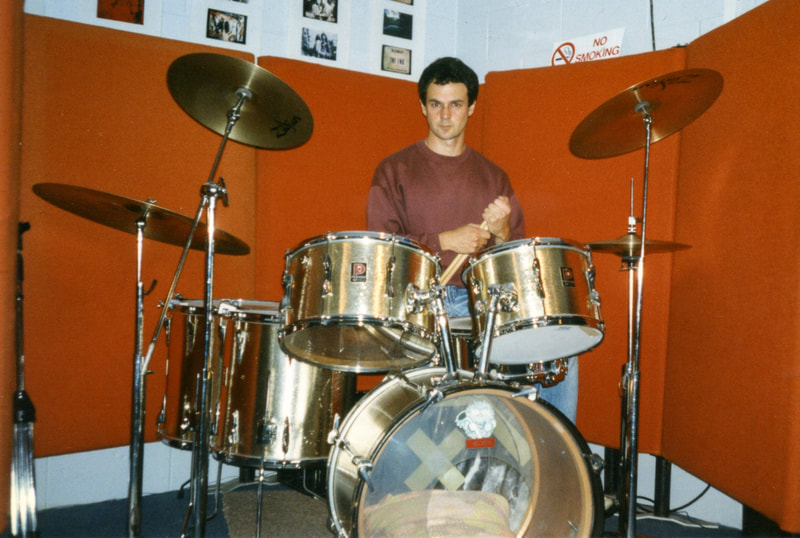
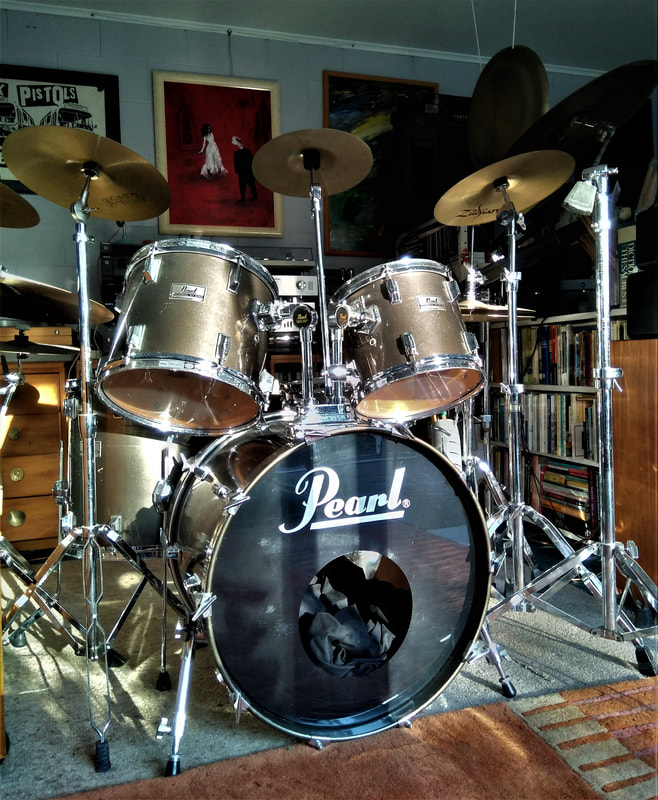
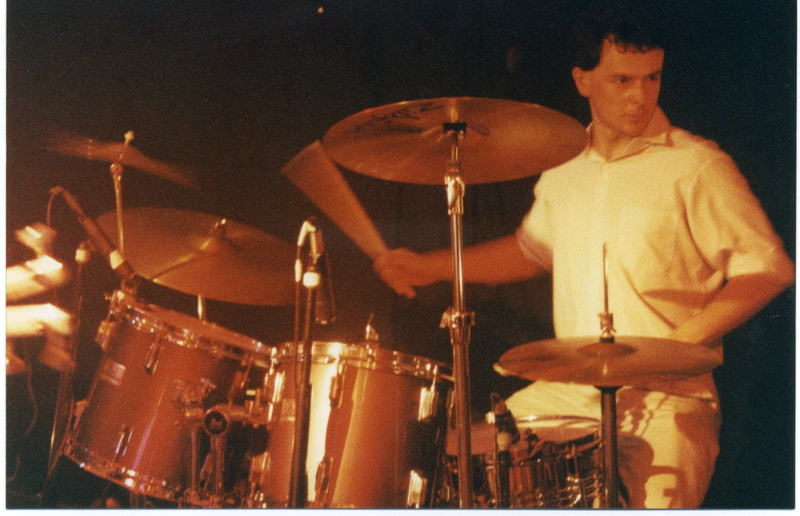
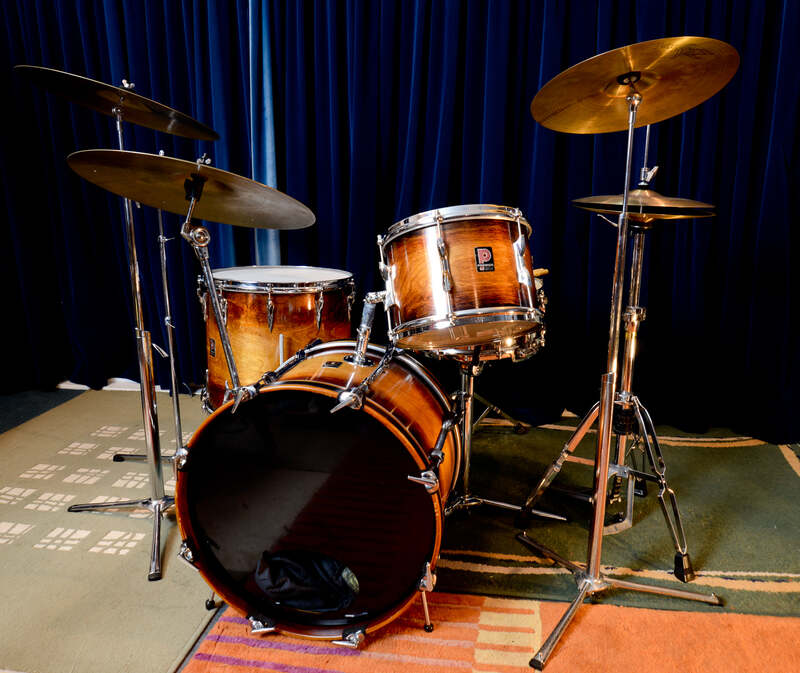
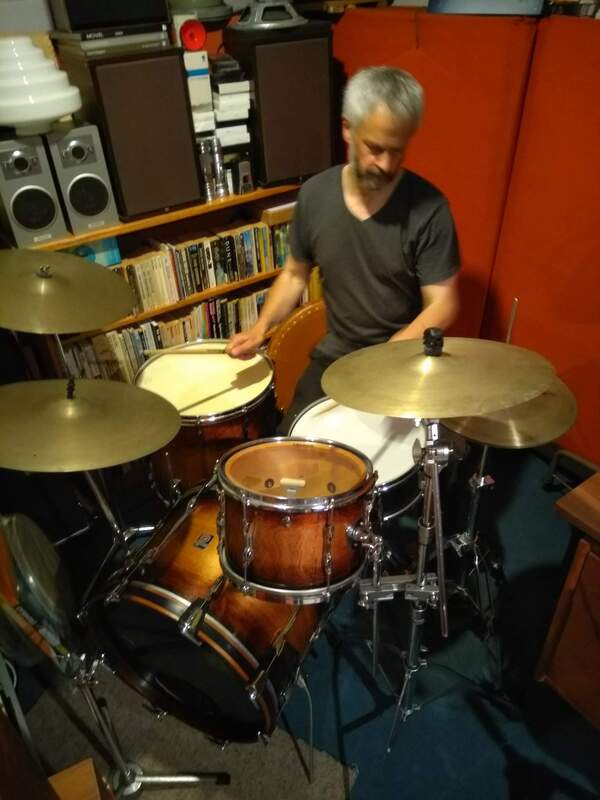
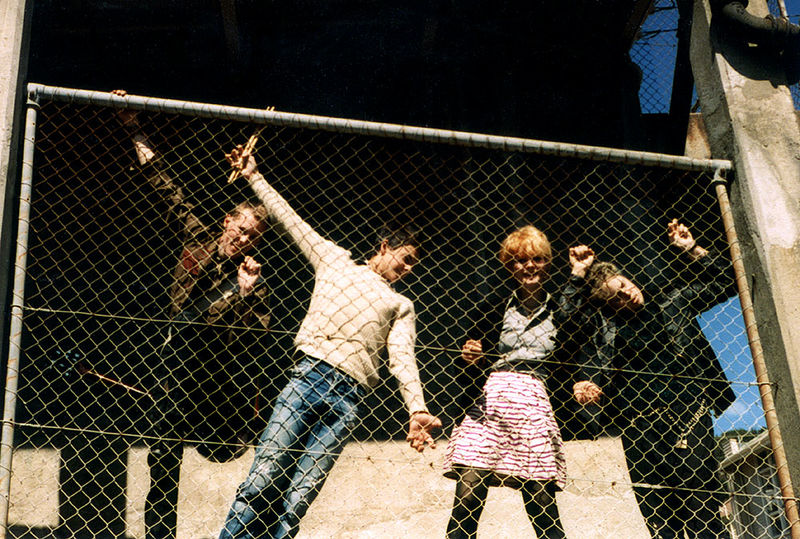
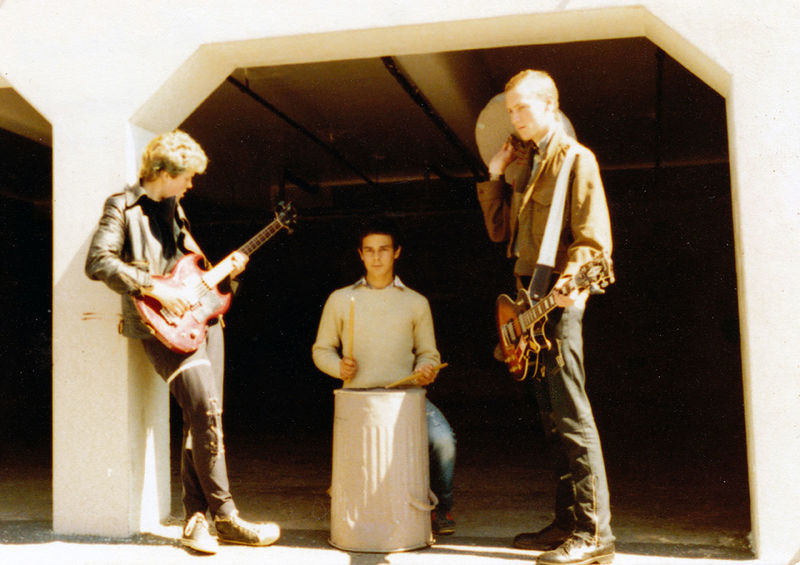
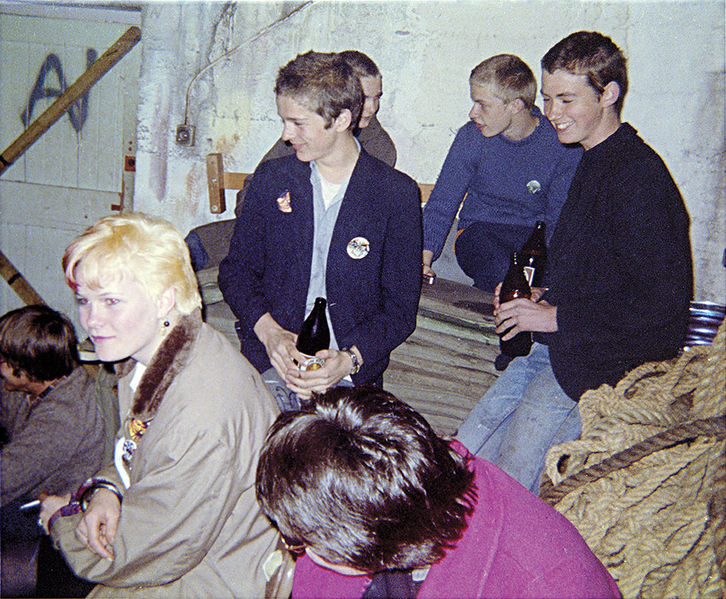
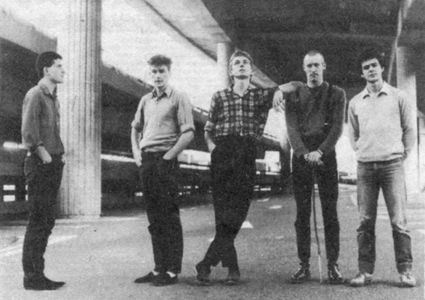
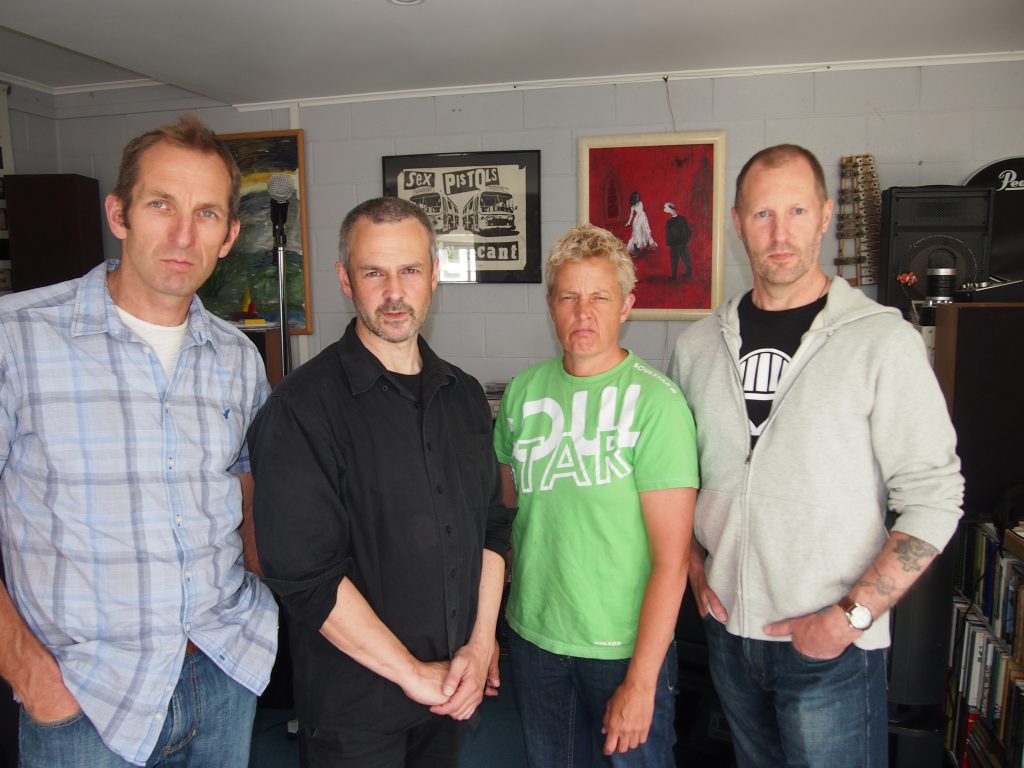
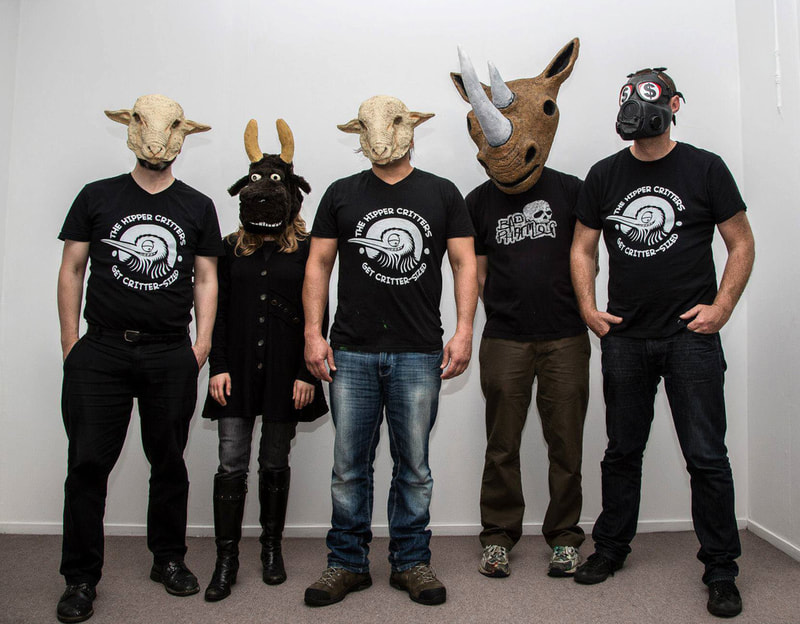
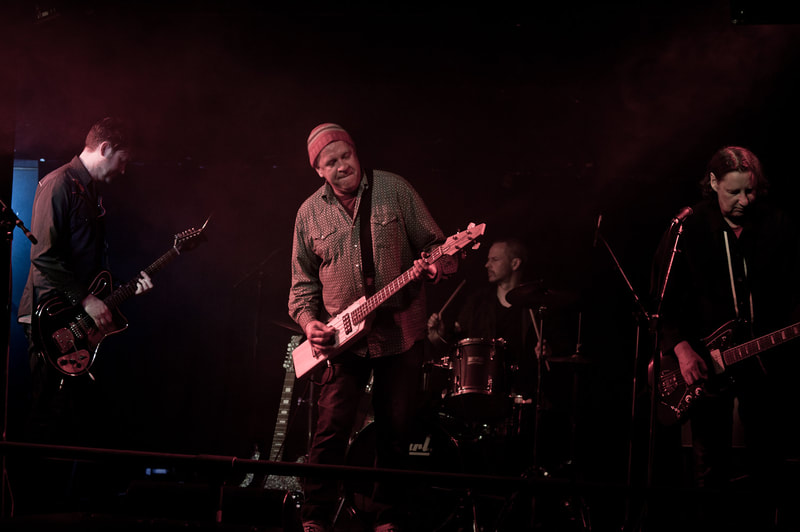
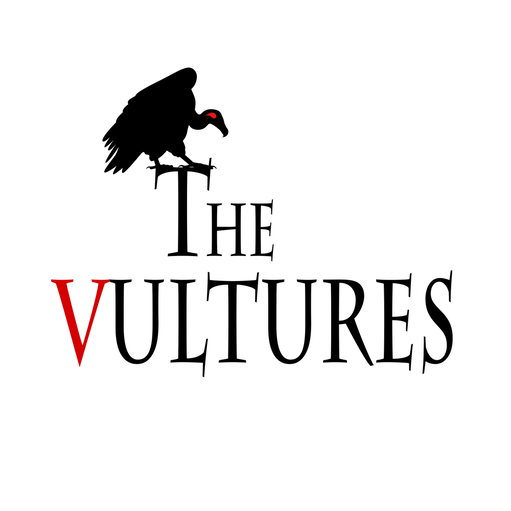
 RSS Feed
RSS Feed
